GlaciersGlaciers are perhaps the most dramatic elements of the Arctic landscape, and are responsible for many of the rapid changes experienced in the Arctic today. They influence the local and regional climate, supply water to the largest rivers, and discharge massive volumes of ice into the sea. They also modify the landscape through erosion and deposition, producing some of the finest scenery on Earth. Crucially, glaciers are under threat from global warming, and are the major contributing factor to sea-level rise. This section illustrates some of the fascinating characteristics of glaciers in the region. |
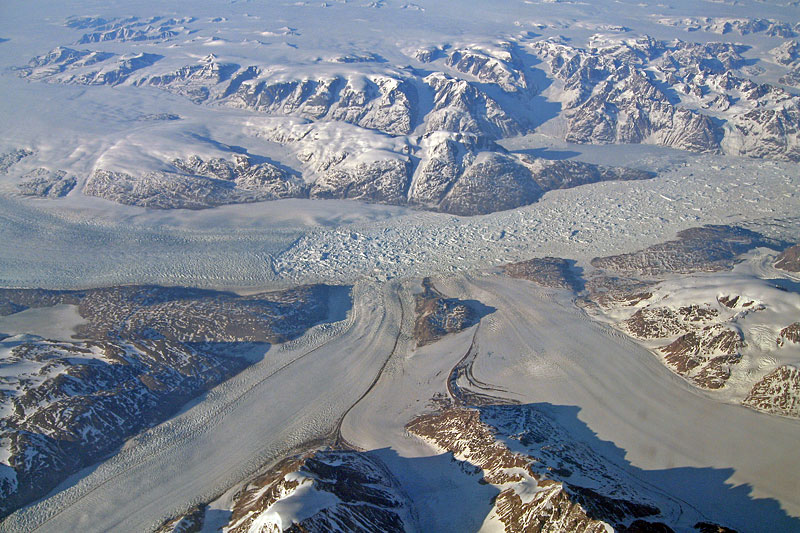 Independent glaciers and outlets of the Greenland Ice Sheet reach the sea around many parts of Greenland. They carve through the rugged mountains of the coastal finges especially here in Kangerdlugssuaq Fjord, East Greenland viewed from 10,000 metres on a Transatlantic flight. | 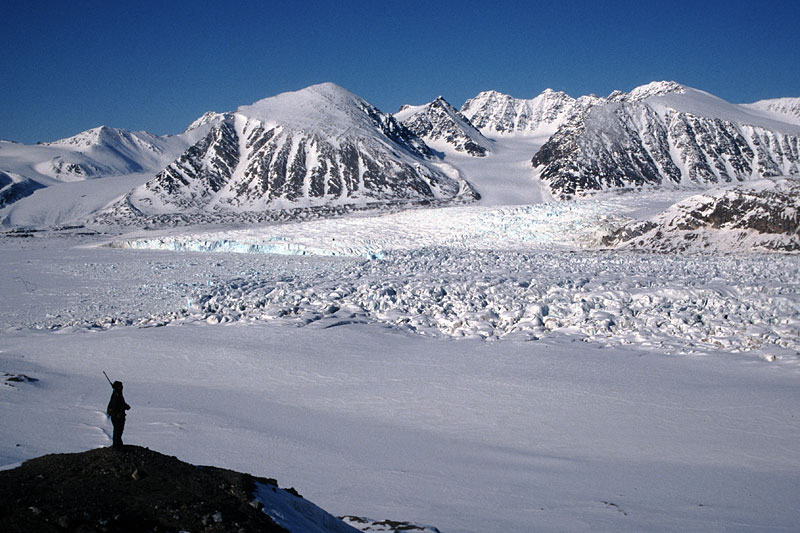 A rifle-bearing visitor (protecting himself against polar bears) surveys the heavily crevassed glaciers of Kronebreen (flowing right to left) and Conwaybreen (background) in NW Spitsbergen. Both these glaciers enter the sea, and in this spring scene the fjord in the foreground is still frozen. | 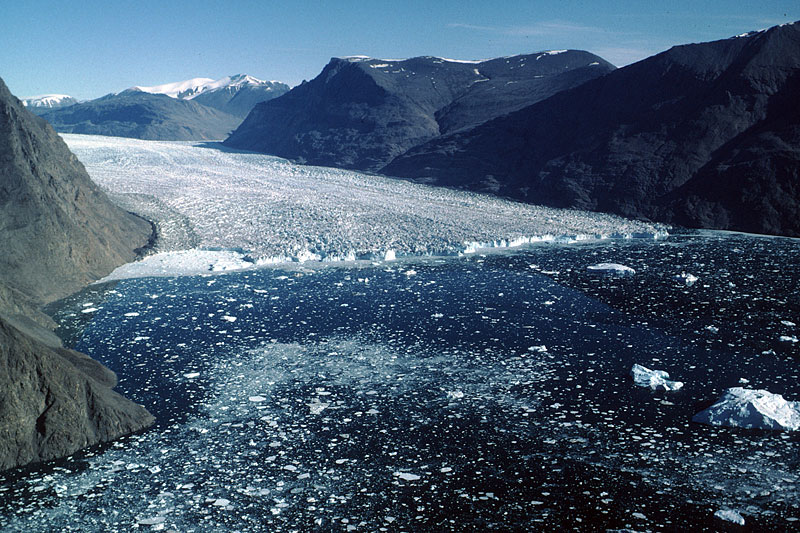 Small icebergs calving from the terminus of the tidewater glacier, Gerard de Geer Gletscher, as it enters Isfjord in East Greenland. This glacier is a major outlet from the Greenland Ice Sheet. | 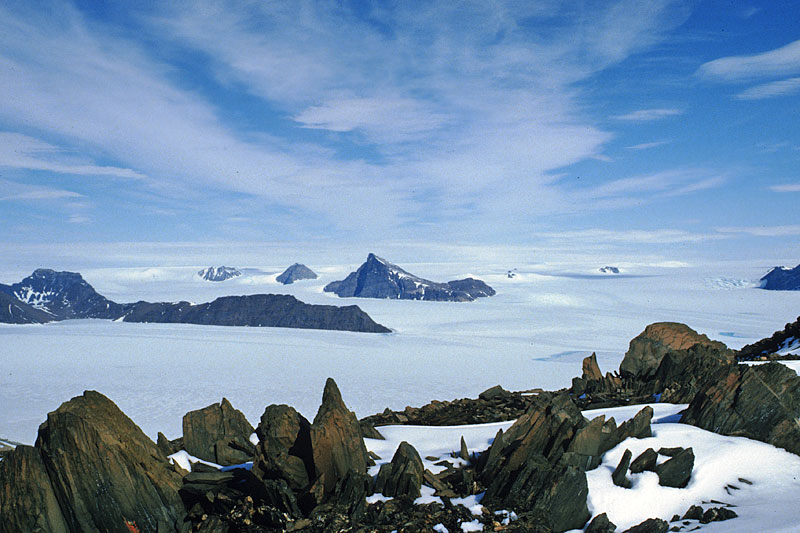 Isolated peaks known as Alfabet Nunatakker at the edge of the Greenland Ice Sheet in East Greenland, viewed from Tillit Nunatak. These nunataks represent the summits of 2000 to 3000 m-high peaks that are almost buried by ice. |
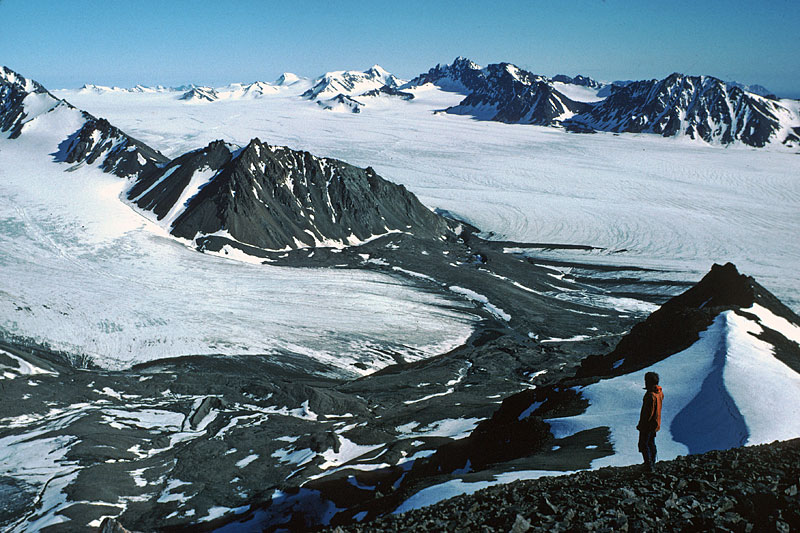 Many Arctic glaciers are fed by highland icefields, high-level areas of undulating snow and ice through which mountains project. Outlet glaciers descend from these icefields towards the coast. This outlet glacier is Aavatsmarkbreen in western Spitsbergen, Svalbard. | 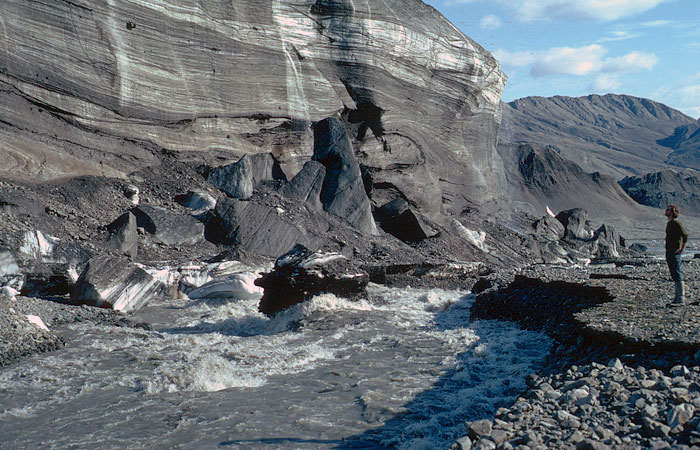 The advancing 30 m-high cliff of Thompson Glacier on Axel Heiberg Island, illustrating the large amount of debris incorporated into the ice from the bed, and a powerful meltstream from the adjacent White Glacier. | 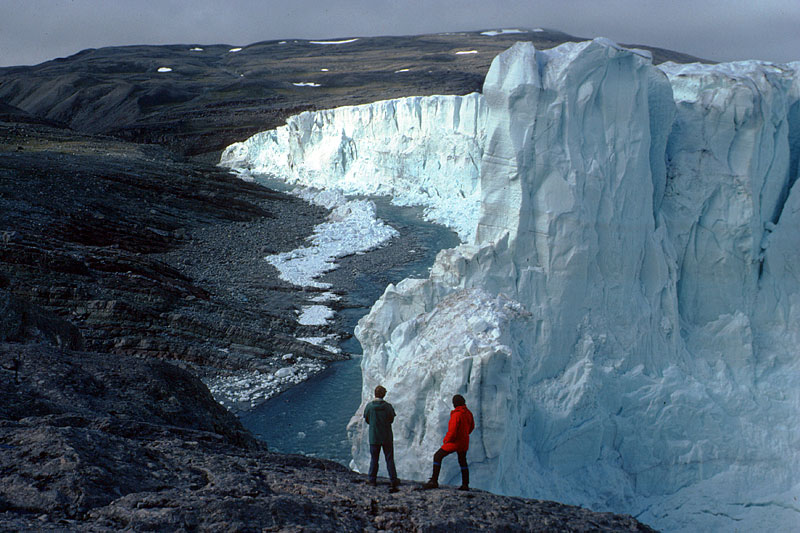 Two geologists survey the lateral ice cliffs and marginal meltwater stream of Wordie Gletscher in East Greenland. The sub-zero temperatures of the ice force englacial meltwater to the margins before it can reach the bed. Here the stream undercuts the cliff, causing ice falls which temporarily block the stream. | 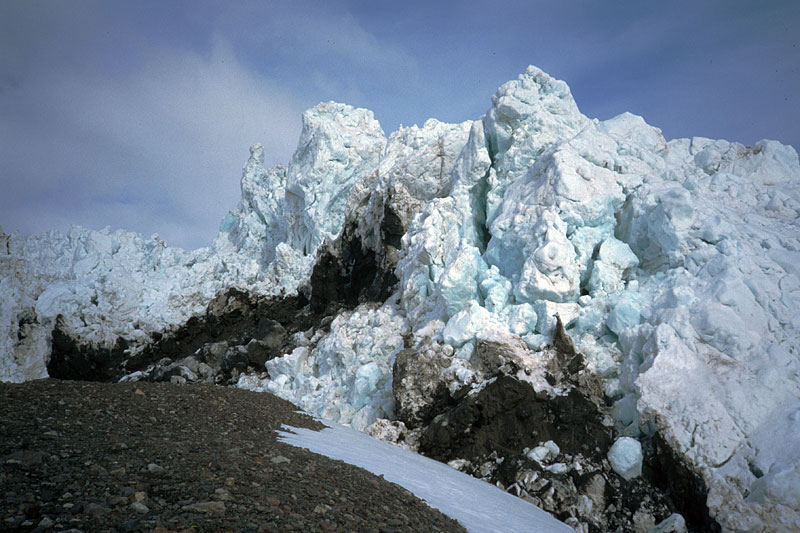 Many glaciers on the Arctic islands undergo short-lived rapid advances known as surges. (B) Ground view of Frijthovbreen in central Spitsbergen during its 1998 surge, showing the visibly advancing terminal cliff about 20 m high as it advances across land at a rate of several metres per day. |
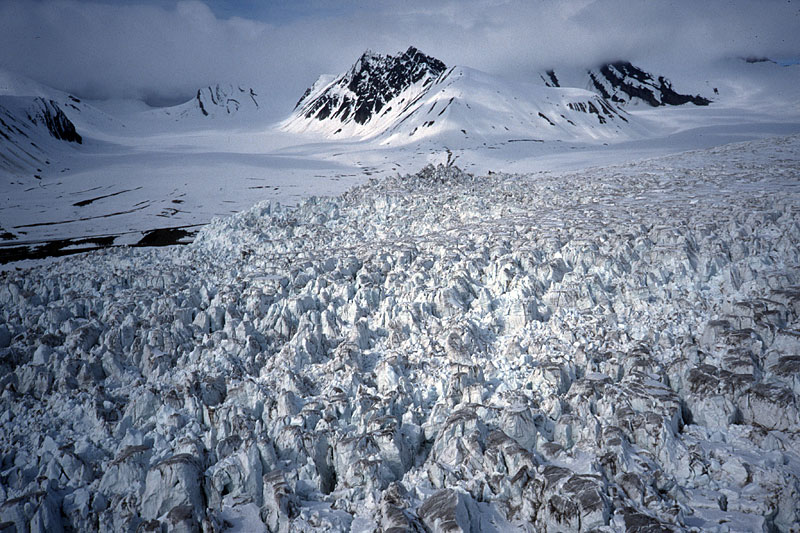 Many glaciers on the Arctic islands undergo short-lived rapid advances known as surges. (A) Aerial view of the heavily crevassed surface of Frijthovbreen in central Spitsbergen during its 1998 surge. | 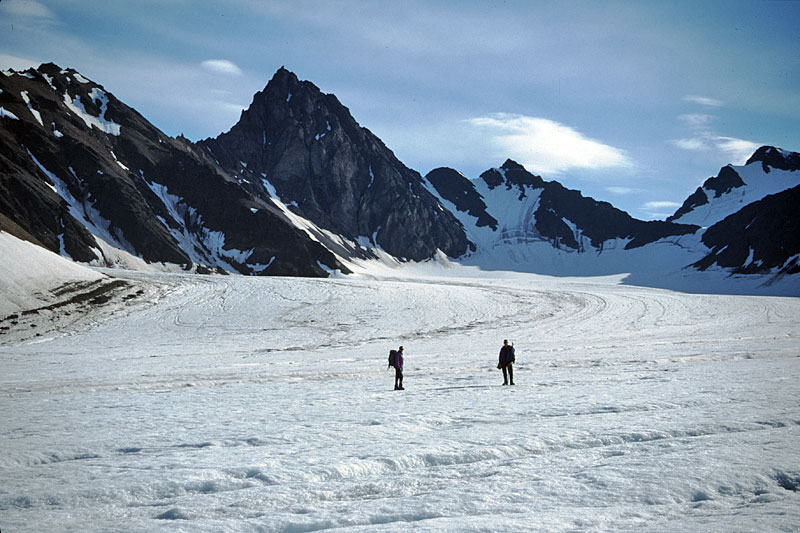 The crevasse-free surface of a small receding valley glacier, Austre Lovénbreen, in NW Spitsbergen. The main obstacles to progress such terrain are deeply incised meltwater streams which form the distant lines across the glacier surface. In the background is a knife-edge ridge, culminating in a pyramidal peak or ‘horn’. | 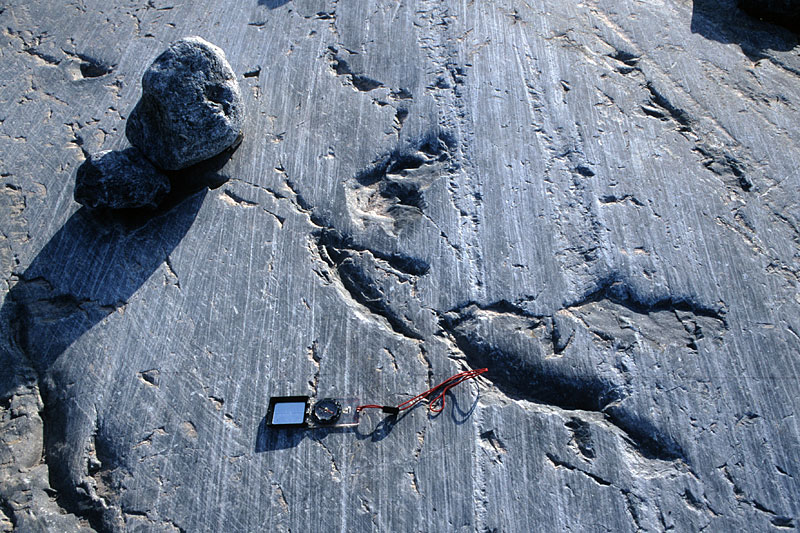 As a glacier slides over its bed, it picks up rock fragments that act as abrasive and scouring agents. As a result bedrock surfaces, such as this limestone outcrop on Ossian Sarsfjellet in NW Spitsbergen, commonly bear polished and scratched (‘striated’) surfaces, as well as various gouge-marks. | 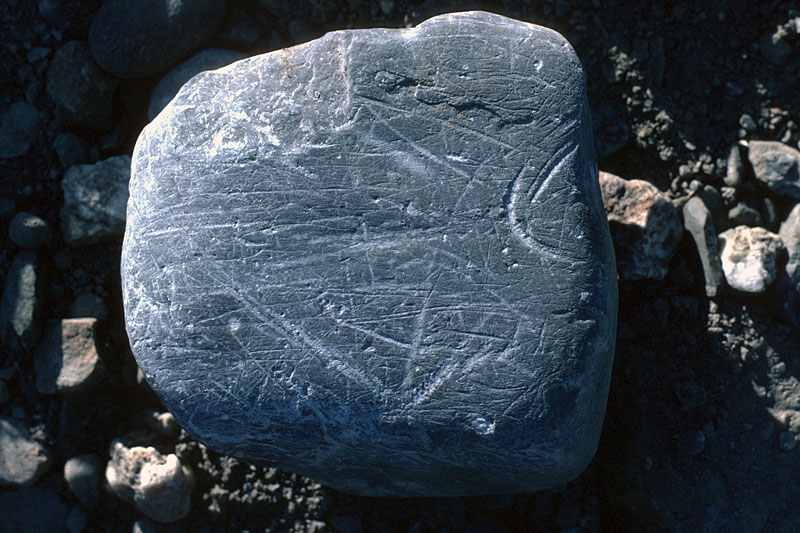 Glacier sliding and entrainment of debris from the bed gives rise to striated stones, such as this limestone cobble near Kongsvegen in NW Spitsbergen. Not all rock types are susceptible to scratching, however, but limestone fragments are commonly striated because of their softness. |
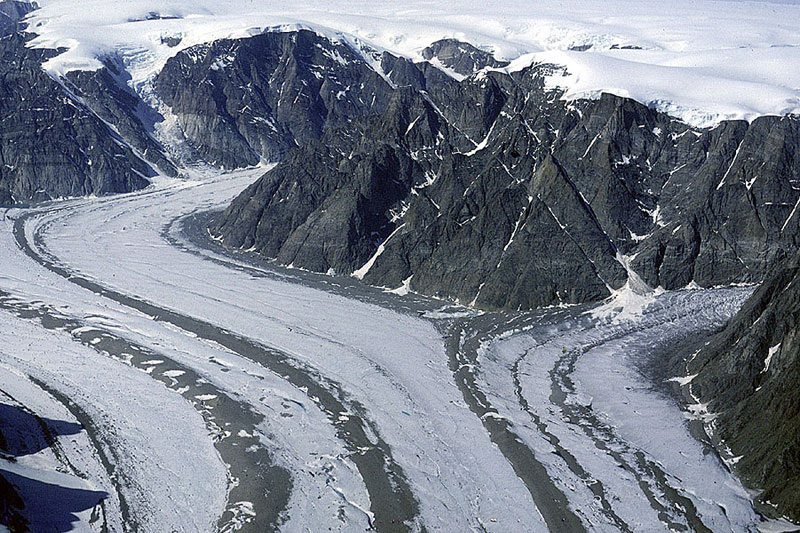 Where different glaciers join together, the debris at the margins merge to form medial moraines, represented by stripes of angular boulders on the glacier surface, as here on Edward Bailey Gletscher in Renland, East Greenland. | 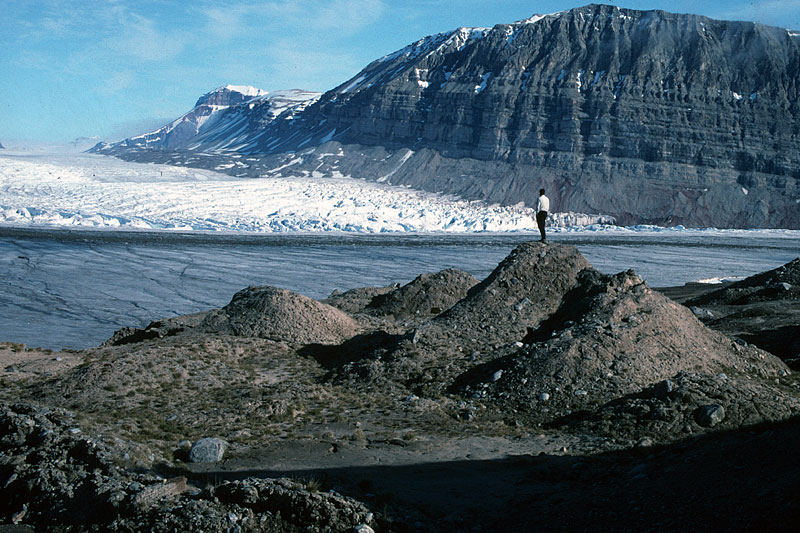 A wide range of depositional landforms is associated with glacier margins. Here are a series of stacked slabs of debris, making up a group of ‘hummocky moraines’. In this example adjacent to Kronebreen in NW Spitsbergen, the moraines are the result of deformation within the glacier. Similar landforms are widely developed in areas no longer occupied ice such as Scandinavia, the British highlands and North America. | 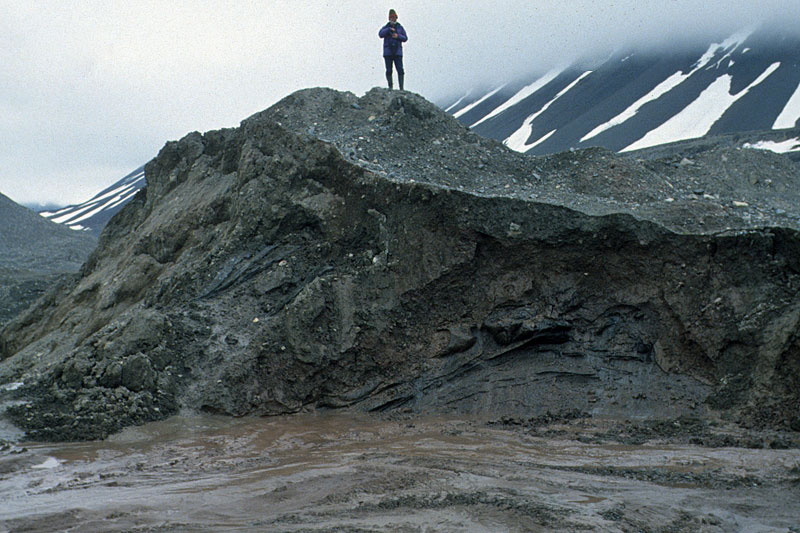 Many different processes operate at modern glacier margins, not only direct deposition from the ice. Because of the availability of meltwater in summer from exposed and buried ice, sediment is especially prone to flowage. Here we see glacial deposits resting on stagnant glacier ice several kimometres from the active margin of Kongsvegen in NW Spitsbergen. As the ice melts, the debris cover collapses and flows downslope as slurry. | |
| Photos: Michael Hambrey |